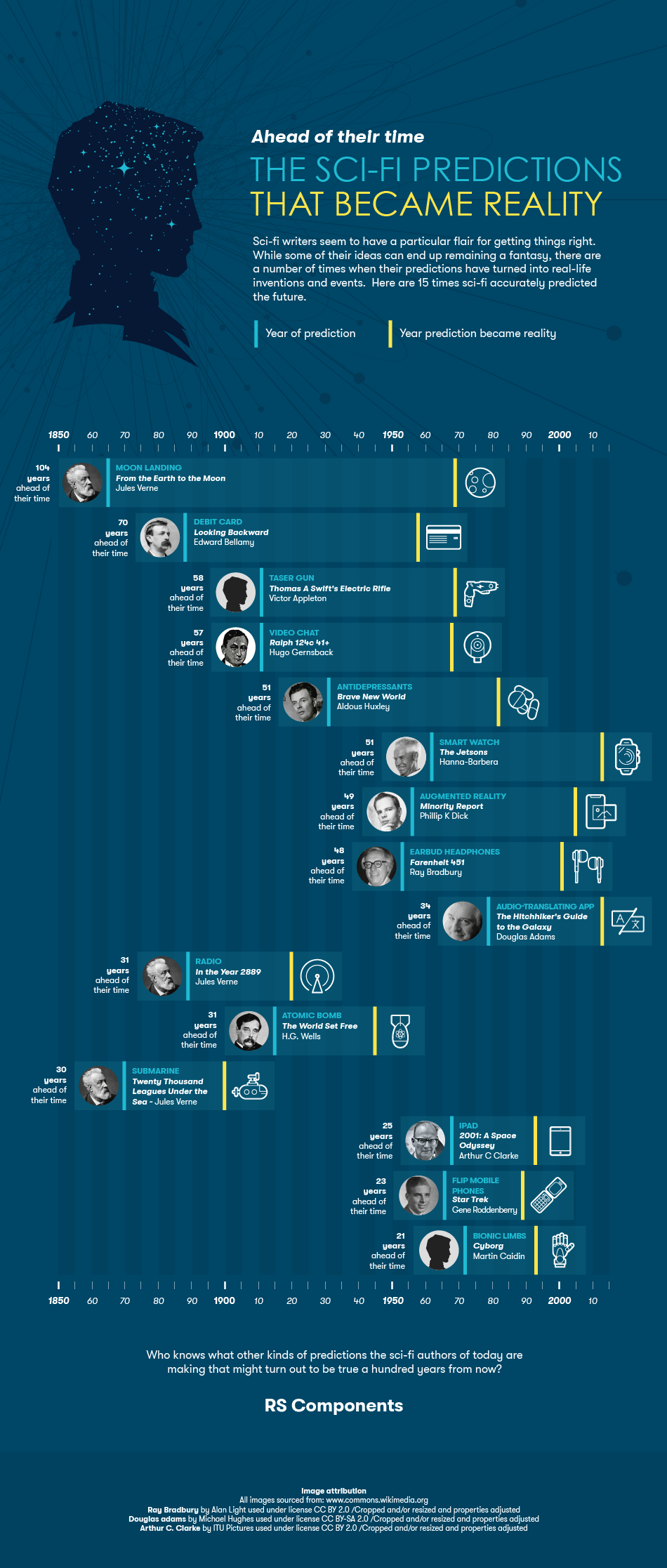When October 21st 2015 finally came around, Robert Zemeckis’s Back to the Future fans were disappointed to see that the time-travelling classic had 2015 predicted all wrong, hoverboards or flying cars were nowhere to be seen. Whilst Zemeckis’ predictions weren’t quite on the money and to this day are still just a fantasy, there have been numerous occasions where the predictions of Sci-Fi writers alike have in-fact become real-life events or inventions.
From automation, credit cards and the smartwatch, RS Components have created a graphic to reveal 15 times sci-fi has become a reality.

The most advanced of them all was novelist Jules Verne. In 1850 Verne predicted a crew of three launching themselves into space in a gun-fired projectile to the moon, in his humorous novel from the Earth to the Moon. Verne’s prediction came to life in 1969 when the actual moon landing took place, making the novelist an incredible 104 years ahead of his time.
This was not the only time Verne could see into the future. Fast forward to 1870 and Verne, in his novel Twenty Thousand Leagues Under the Sea, featured a submarine fully powered by electricity. At the time, only mechanically powered submarines were in use and 30 years after the book was published the electric submarine was born. Verne also envisioned in 1889 that one-day people would listen to the news rather than just reading a newspaper and 31 years later the Radio was invented.
In 1962, the cartoon programme The Jetsons featured a high-tech watch that was able to stream videos in colour. Whilst the modern-day smartwatches don’t have the same functionality, the appearance is very similar to those on The Jetsons 51 years ago.
25 years before Apple released its iPad, Author Arthur C Clarke, predicted in 1968 the electronic papers or the ‘newspad’ that people read.
Not only were Sci-Fi writers imagining the latest technology we see today, but they also predicted advancements in medicine too. For example, Aldous Huxley who, in his novel Brave New World in 1931, wrote about mood-altering pills called Soma that acted as an antidepressant hallucinogen. Over 50 years later, scientists began researching into antidepressant drugs.
Whilst flying cars are still not on the horizon, numerous Sci-Fi movies and novels have proven to shape and inspire modern-day technologies.
Who knows what predictions creative geniuses of today will come up with and when they will come to life?

